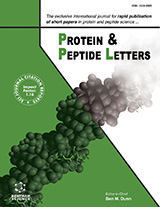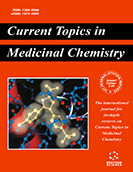Abstract
Peptidylarginine deiminase IV (PAD4) catalyzes the conversion of an Arg residue to a citrulline residue in various proteins. In particular, citrullination of histone subunits, such as H2A and H3, by PAD4 is thought to be related to rheumatoid arthritis. However, the details of the citrullination mechanism of histone H2A and H3 are not yet well known. Moreover, the effects of N-terminal acetylation on histone subunits with respect to PAD4 recognition have not yet been studied. To further study the mechanism of PAD4 recognition of histone H2A and H3 subunits, a series of the N-terminal peptides was chemically synthesized and the citrullination sites were identified using MALDI-TOF/MS. N-terminal acetylation of histone H2A was not significant with respect to PAD4 recognition in vitro, but the acetylation of H3 peptide had a significant effect on PAD4 recognition in vitro, resulting in predominant citrullination at the Arg2 residue.
Keywords: Histone, Acetylation, Peptidylarginine deiminase, Citrullination, Rheumatoid arthritis
Protein & Peptide Letters
Title: Recognition of the N-Terminal Histone H2A and H3 Peptides by Peptidylarginine Deiminase IV
Volume: 16 Issue: 9
Author(s): Masatoshi Saiki, Mayumi Watase, Hironori Matsubayashi and Yuji Hidaka
Affiliation:
Keywords: Histone, Acetylation, Peptidylarginine deiminase, Citrullination, Rheumatoid arthritis
Abstract: Peptidylarginine deiminase IV (PAD4) catalyzes the conversion of an Arg residue to a citrulline residue in various proteins. In particular, citrullination of histone subunits, such as H2A and H3, by PAD4 is thought to be related to rheumatoid arthritis. However, the details of the citrullination mechanism of histone H2A and H3 are not yet well known. Moreover, the effects of N-terminal acetylation on histone subunits with respect to PAD4 recognition have not yet been studied. To further study the mechanism of PAD4 recognition of histone H2A and H3 subunits, a series of the N-terminal peptides was chemically synthesized and the citrullination sites were identified using MALDI-TOF/MS. N-terminal acetylation of histone H2A was not significant with respect to PAD4 recognition in vitro, but the acetylation of H3 peptide had a significant effect on PAD4 recognition in vitro, resulting in predominant citrullination at the Arg2 residue.
Export Options
About this article
Cite this article as:
Saiki Masatoshi, Watase Mayumi, Matsubayashi Hironori and Hidaka Yuji, Recognition of the N-Terminal Histone H2A and H3 Peptides by Peptidylarginine Deiminase IV, Protein & Peptide Letters 2009; 16 (9) . https://dx.doi.org/10.2174/092986609789055449
| DOI https://dx.doi.org/10.2174/092986609789055449 |
Print ISSN 0929-8665 |
| Publisher Name Bentham Science Publisher |
Online ISSN 1875-5305 |
 5
5
- Author Guidelines
- Bentham Author Support Services (BASS)
- Graphical Abstracts
- Fabricating and Stating False Information
- Research Misconduct
- Post Publication Discussions and Corrections
- Publishing Ethics and Rectitude
- Increase Visibility of Your Article
- Archiving Policies
- Peer Review Workflow
- Order Your Article Before Print
- Promote Your Article
- Manuscript Transfer Facility
- Editorial Policies
- Allegations from Whistleblowers
Related Articles
-
Alkannins and Shikonins: A New Class of Wound Healing Agents
Current Medicinal Chemistry Patent Selections:
Recent Patents on Inflammation & Allergy Drug Discovery The Yin and Yang of Inflammation
Current Molecular Medicine Reversal of Resistance to Oxazaphosphorines
Current Cancer Drug Targets A Systematic Review And Meta-Analysis of Clinical Trials of Mesenchymal Stem Cell Therapy for Cartilage Repair
Current Stem Cell Research & Therapy CD26/Dipeptidyl Peptidase IV as a Novel Therapeutic Target for Cancer and Immune Disorders
Mini-Reviews in Medicinal Chemistry T-Cell-Mediated Signalling in Immune, Inflammatory and Angiogenic Processes: The Cascade of Events Leading to Inflammatory Diseases
Current Drug Targets - Inflammation & Allergy Gene Expression Profiles in Human Autoimmune Disease
Current Pharmaceutical Design Novel, Acidic CCR2 Receptor Antagonists: Lead Optimization
Letters in Drug Design & Discovery Role of Defensins and Cathelicidin LL37 in Auto-Immune and Auto- Inflammatory Diseases
Current Pharmaceutical Biotechnology Repeated Restraint and Nerve Growth Factor Administration in Male and Female Mice: Effect on Sympathetic and Cardiovascular Mediators of the Stress Response
Current Neurovascular Research CD147: A Novel Modulator of Inflammatory and Immune Disorders
Current Medicinal Chemistry Prerequisite of a Holistic Blend of Traditional and Modern Approaches of Cancer Management
Current Cancer Therapy Reviews Novel Ligands: Fine Tuning the Transcriptional Activity of the Glucocorticoid Receptor
Current Pharmaceutical Design Targeting the Secretory Pathway for Anti-Inflammatory Drug Development
Current Topics in Medicinal Chemistry Novel Agents Targeting Nitric Oxide
Current Vascular Pharmacology Hemophagocytic Lymphohistiocytosis (HLH): An Update
Current Immunology Reviews (Discontinued) Towards a Better Understanding of Cardiac and Vascular Disease in Patients with Chronic Kidney Disease
Current Cardiology Reviews Viral Anti-Inflammatory Reagents: The Potential for Treatment of Arthritic and Vasculitic Disorders
Endocrine, Metabolic & Immune Disorders - Drug Targets Tocilizumab Labeling with 99mTechnetium via HYNIC as a Molecular Diagnostic Agent for Multiple Myeloma
Anti-Cancer Agents in Medicinal Chemistry

















.jpeg)








